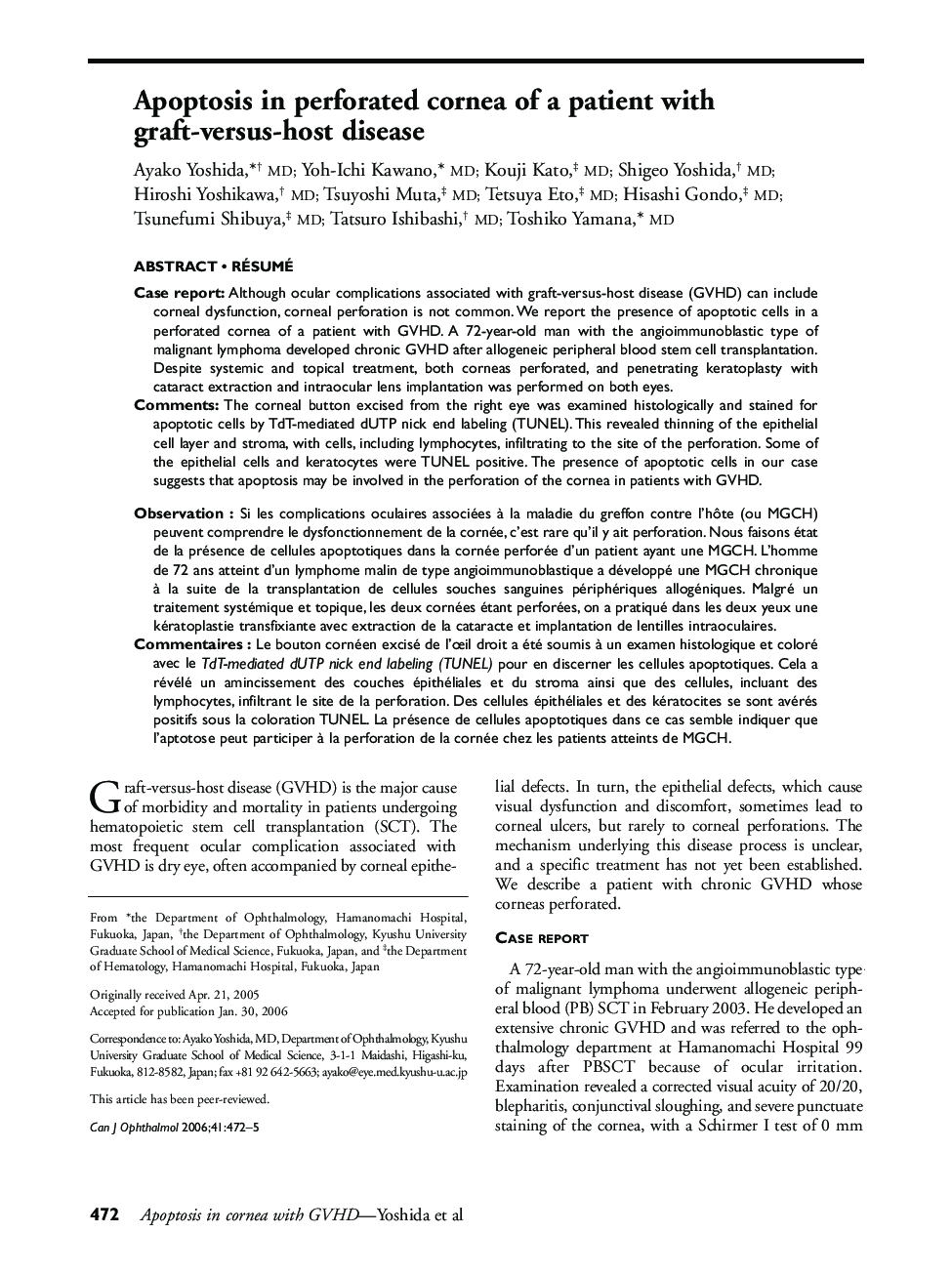| کد مقاله | کد نشریه | سال انتشار | مقاله انگلیسی | نسخه تمام متن |
|---|---|---|---|---|
| 4010845 | 1602455 | 2006 | 4 صفحه PDF | دانلود رایگان |

Case report: Although ocular complications associated with graft-versus-host disease (GVHD) can include corneal dysfunction, corneal perforation is not common. We report the presence of apoptotic cells in a perforated cornea of a patient with GVHD. A 72-year-old man with the angioimmunoblastic type of malignant lymphoma developed chronic GVHD after allogeneic peripheral blood stem cell transplantation. Despite systemic and topical treatment, both corneas perforated, and penetrating keratoplasty with cataract extraction and intraocular lens implantation was performed on both eyes.Comments: The corneal button excised from the right eye was examined histologically and stained for apoptotic cells by TdT-mediated dUTP nick end labeling (TUNEL).This revealed thinning of the epithelial cell layer and stroma, with cells, including lymphocytes, infiltrating to the site of the perforation. Some of the epithelial cells and keratocytes were TUNEL positive. The presence of apoptotic cells in our case suggests that apoptosis may be involved in the perforation of the cornea in patients with GVHD.
RésuméObservation: Si les complications oculaires associées à la maladie du greffon contre l’hôte (ou MGCH) peuvent comprendre le dysfonctionnement de la cornée, c’est rare qu’il y ait perforation. Nous faisons état de la présence de cellules apoptotiques dans la cornée perforée d’un patient ayant une MGCH. L’homme de 72 ans atteint d’un lymphome malin de type angioimmunoblastique a développé une MGCH chronique à la suite de la transplantation de cellules souches sanguines périphériques allogéniques. Malgré un traitement systémique et topique, les deux cornées étant perforées, on a pratiqué dans les deux yeux une kératoplastie transfixiante avec extraction de la cataracte et implantation de lentilles intraoculaires.Commentaires: Le bouton cornéen excisé de l’œil droit a été soumis à un examen histologique et coloré avec le TdT-mediated dUTP nick end labeling (TUNEL) pour en discerner les cellules apoptotiques. Cela a révélé un amincissement des couches épithéliales et du stroma ainsi que des cellules, incluant des lymphocytes, infiltrant le site de la perforation. Des cellules épithéliales et des kératocites se sont avérés positifs sous la coloration TUNEL. La présence de cellules apoptotiques dans ce cas semble indiquer que l’aptotose peut participer à la perforation de la cornée chez les patients atteints de MGCH.
Journal: Canadian Journal of Ophthalmology / Journal Canadien d'Ophtalmologie - Volume 41, Issue 4, August 2006, Pages 472-475